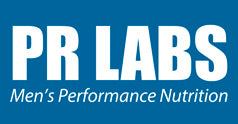The Significance of Prostate Zones
In males, the prostate is a small gland that is responsible for the production of seminal fluid that nourishes and transports sperm cells. It is located right beneath the bladder and surrounds the top portion of the urethra, weighing anywhere between 7 to 16 grams, and is around the same size as a walnut. Like most other organs in the body, the prostate can be divided into three primary lobes or “prostate zones” based on the different types of tissues it is composed of.
Each zone makes up a portion of the overall prostate and is useful for helping detect and diagnose abnormalities like benign tumors or cancer. Instead of categorizing the different parts of the prostate by anatomical lobes (like the inferoposterior and anteromedial), scientists now look at the histological division of the prostate based on its similar cellular structures. These zones are labeled the peripheral zone (PZ), central zone (CZ), and the transition zone (TZ).
Peripheral Zone
The peripheral zone contains roughly 70% of prostatic glandular tissue, with the largest surface area being at the posterior or back of the gland near the rectal wall. This is useful for physicians when screening the prostate during a Digital Rectal Examination (DRE) as it allows them to feel around the majority of the gland when performing a health check-up. It is also important that the peripheral zone is easily accessible since this is the location where about 75-80% of prostate cancers originate.
Also from the peripheral zone are ducts that empty out vertically into the prostatic urethra, which can be responsible for urine reflux, a case in which urine flows backward from the bladder into the kidneys, causing a urinary tract infection. This might also explain the high frequencies of inflammation that occurs in this area.
Central Zone
The tissue that surrounds the ejaculatory ducts of the prostate makes up the central zone. This wedged-shaped area comprises about 25% of prostate volume and forms the base of the gland between the peripheral zone and the transition zone. Unlike the vertical ducts in the peripheral zone, the ejaculatory ducts in the central zone empty out obliquely, making them nearly immune to urine reflux. Only around 5% of cancers begin in this zone, but are more likely to be aggressive and invade the surrounding seminal glands.
Transition Zone
In the middle of the prostate, at the anterior of the central zone, is the small portion of tissue called the transition zone. This lobe has the smallest glandular composition at around 5%.
It completely forms around the urethra, starting out small in young males and growing larger with age. Because this zone continuously grows, it is responsible for normal gland enlargement, also known as benign prostatic hyperplasia (BPH). This enlargement can put pressure around the urethra, making it difficult for urine to flow through from the bladder, thus permitting issues like urinary tract infections and other inflammatory problems to arise. BPH is non-cancerous and can be treated with medication or minimally invasive surgery. However, 20% of cancers can start in this prostate zone, but are typically treated successfully through cancer treatments such as radiation therapy and surgery to remove cancerous tissue.
Fibromuscular Stroma
Sometimes called the fourth zone, this portion of the gland forms the entire anterior or frontal area of the prostate. Unlike glandular tissue, this zone is composed of smooth, vertically oriented muscles shared alongside the bladder wall muscles. It is believed this prostate zone plays a significant role in urethral resistance.
When divided into three major prostate zones, the prostate gland becomes easier to view and understand based on their positions. The significance of these zones allow scientists to look at each one and see how they behave in the body and possibly learn more about what causes cancers and other benign issues and hopefully find ways to better treat or stop them altogether.
Conclusion
Prostate health is a major component of men’s health, and while there is no proven method to prevent prostate cancer completely, there are lifestyle changes that you can make to reduce your chances.
Two major ways to reduce your chances of prostate cancer come from your diet and exercise habits. Exercising regularly can help you maintain a healthy weight and can also reduce your risk of heart disease. Supplementation may also be a great place to start if you really want to elevate your prostate health. If you are looking around for prostate supplements for men, we have developed a powerful one that contains antioxidants and natural ingredients that promote normal prostate and urinary function. Prost-P10x is a Urologist-Formulated Natural Prostate and Urinary Health Support supplement.
Join Our Community & Save 10% Off Your First Order
We’ll send you a coupon code for 10% off your first order. Stay on our list
and we’ll keep you updated with tips for optimal health, new product launches, sales, and more!




